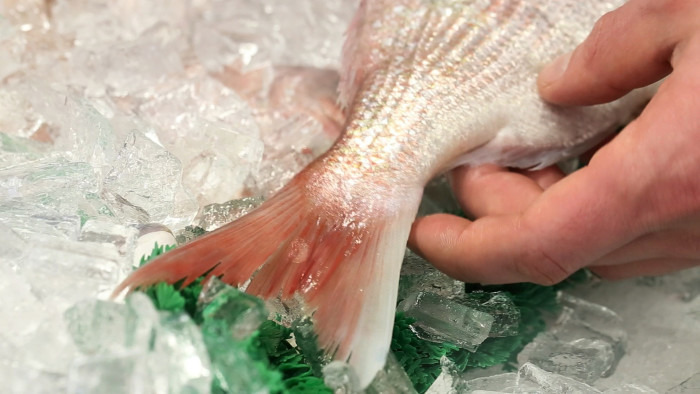How To Shop For Whole Fish At Groceries And Markets
Selecting high-quality whole fish at grocery stores or fish markets is simple when you know what to look for. A few easy inspection tips are all you need to keep in mind in order to determine whether the fish is fresh or prefrozen, has been handled properly or improperly, and is healthy or unhealthy. Our friends at ChefSteps wrote in this week with advice for your next seafood-shopping trip. They also cover selecting filleted fish and choosing frozen fish. Scroll down for a quick video detailing it all.
Eyes

The fish's eyes should be crystal-clear, plump, wet and shiny, with no sunken features. Once the fish begins to deteriorate, the eyes dry out, become cloudy and sink in or shrivel away.
Fins

The tail and dorsal fins of the fish should be healthy-looking, wet and intact. A mishandled fish will have torn or ragged fins, while an older fish's fins will be dry and brittle.
Flesh

The fish's flesh should feel cold, wet and slippery, but not sticky. When pressed, it should spring back to its natural shape. If it does not spring back and the meat has softened, it is no longer fresh.
Gills

The brighter the gills, the fresher the fish (when first caught, the gills appear bright red). The gills should feel clean and cold, not slimy. After several days, the fish's gills will become dark brown or even black in color and might also be slimy and sticky.
Scales

The fish's scales should be shiny and firm. Less-fresh fish will often shed scales as you run your hand over them, and they may appear dry and flaky.
Video Tutorial
ChefSteps comprises a team of award-winning chefs, filmmakers, scientists, designers and engineers focused on revolutionizing the way people cook by inspiring creativity and encouraging expertise in the kitchen. The site is currently offering free online classes called Cooking Sous Vide: Getting Started and Burgers, as well as a $10 class called Cooking Sous Vide: Beyond the Basics.

